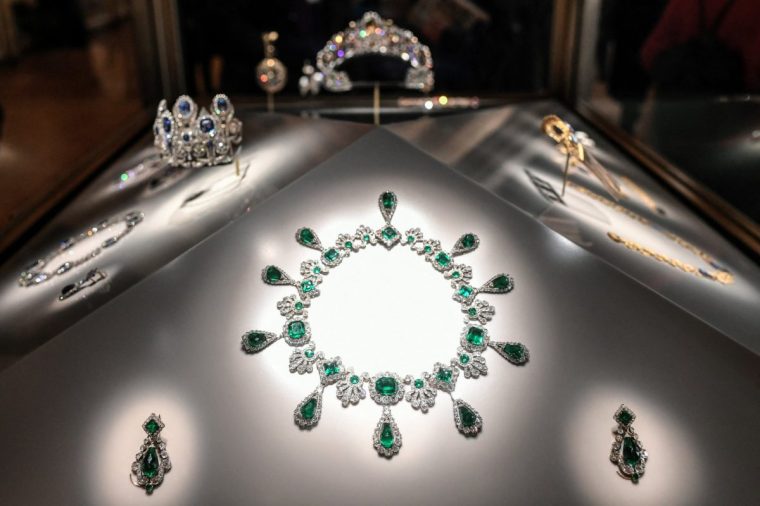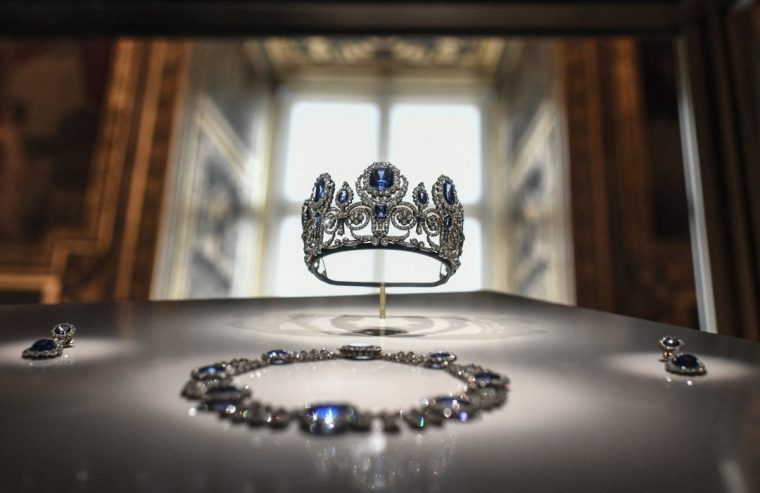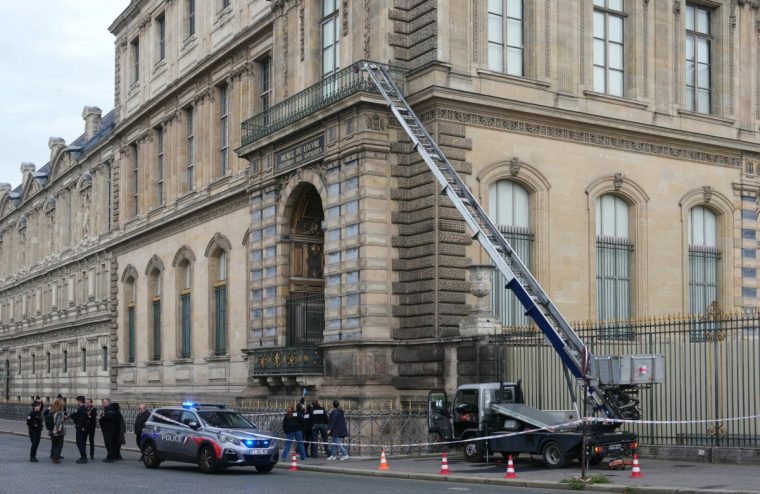It is a race against time before the precious jewels stolen from the Louvre Museum in Paris are broken up, never be recovered, experts told The i Paper
Investigators are racing against time to recover priceless royal jewels stolen from the Louvre before they are broken up and lost for ever.
The thieves broke into the iconic Louvre Museum in Paris early on Sunday, making off with eight pieces of jewellery dating back to the 19th century that once belonged to the French royal family.
The brazen theft, which took less than seven minutes, involved thieves entering the museum’s Galerie d’Apollon (Gallery of Apollo) via an outside lift used for renovation work, breaking through a window, and making off with the jewels.
The items stolen included a tiara, necklace and single earring from the sapphire set of Queen Marie-Amelie and Queen Hortense, an emerald necklace and pair of earrings from the Empress Marie Louise set, and a tiara and brooch belonging to Empress Eugénie, the wife of Napoleon III.
Two more items, including Empress Eugénie’s crown, were recovered near the museum, apparently having been dropped.
The theft was the latest robbery from a European cultural institution, and experts told The i Paper that not only was it well planned, but the chances of recovering the stolen items grew slimmer with every day that passed.

“It’s a race against time. The longer it takes, the more likely it is they will never be found, or at least not in one piece,” Arthur Brand, a Dutch art crime investigator who has helped to track down stolen works of art, told The i Paper.
“Thieves like this lay low for a while, maybe one or two weeks, and then they start trying to get rid of the items,” he said. “This isn’t a group that doesn’t know what to do – they were very well prepared; it’s not their first time.”
The theft has left the art world reeling. The BBC reported that around 60 investigators were working on the case, with prosecutors operating under the belief that the thieves were following orders for a criminal organisation.
Anthony Amore, an art theft expert, investigator, and security practitioner, told The i Paper that “the great danger inherent to the theft of items such as these crown jewels is that they might be broken into individual pieces and sold”.

He said if they were broken down it would be nearly impossible for a buyer to tell where the gold or jewels came from, making it “far more profitable than stealing a masterpiece painting – which cannot be sold in that manner, or in any manner in most cases”.
While the French culture ministry pointed to the historical and cultural value of the items taken, the thieves were more likely to be interested in their financial value. Between them, these pieces are adorned with thousands of diamonds and other precious gemstones.
“Historically, there’s been a sea change in objects being stolen” from museums, said Geoffrey Kelly, a retired FBI Art Crime Team agent and partner at Argus Cultural Property Consultants, a risk management firm specialising in the protection and preservation of fine art, antiquities and heritage sites.
“When you think of stolen artwork, it’s very difficult now to successfully get away with stealing paintings,” he told The i Paper. “You have apps on your phone where you can access Interpol or the FBI’s stolen art file – you can point your smartphone at an object and identify it and see if it is stolen. Thieves are aware of that, so they have to come up with other alternatives if they want to be able to monetise museum theft.”
Kelly said that, in his experience, when it came to thefts from museums, it was typically done by gangs that did not specialise in art theft, making the following steps harder for them.
“The robbery was in some ways the easy part, now it is about trying to monetise and move them,” he said. “It’s possible, with the amount of planning that went into it, they probably have a mechanism to move these stones, to break them down, to recut them, which is disturbing to think about.”

Kelly said that police would be trying to identify mobile devices that were in the area and looking for DNA or prints, though he said the thieves were likely to have been very careful.
“Surveillance video is one of the Achilles’ heels of any crime in the centre of a metropolitan city like Paris,” he added. “Even when you leave the vicinity of the Louvre, you’re going to get picked up on CCTV cameras and Ring cameras… it’s going to be very difficult to get to a point where you aren’t recorded on any cameras.”
Kelly suggested that the thieves might hold on to the items for a short period of time, “because if there comes a day that the French police come knocking on their door they will want a bargaining chip, [but] as time goes on, and it looks like they got away with it, that’s when they will start moving to break them up and monetise them.
“If these thieves have a comfort level that they believe they have gotten away with it, and they can start breaking them down, it is going to be very difficult to ever recover them.”
Brand, the Dutch investigator, gave French authorities a 50 per cent chance of recovering the items.
“If [the thieves] don’t know who to sell it to, they will struggle to find someone because of all the attention. Even if they have someone lined up, that person might back out. It’s just too big. You have the French Prime Minister and secret services talking about it,” he said.
Brand said that over the past ten to 15 years there had been a rise in thefts targeting gold and jewellery in museum collections. “They go for small, easy-to-carry objects. It’s horrible because you can recover a painting years later, but objects like this will be quickly broken down – if you steal a painting, it’s only worth something if it’s intact.”
He also pointed to a rise in museums being targeted in countries like Germany, the UK, France and Holland. “We are seeing a lot of copycats,” he said. “One theft inspires another theft. That is the fear for museums around the world – if people see the Louvre is vulnerable, what about their smaller museums or galleries?”
Kelly, for his part, said that a theft as organised as the one at the Louvre occurred maybe once a decade. “It seems like the Louvre robbery is going to be at least the crime of the decade,” he said.
